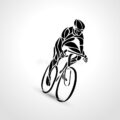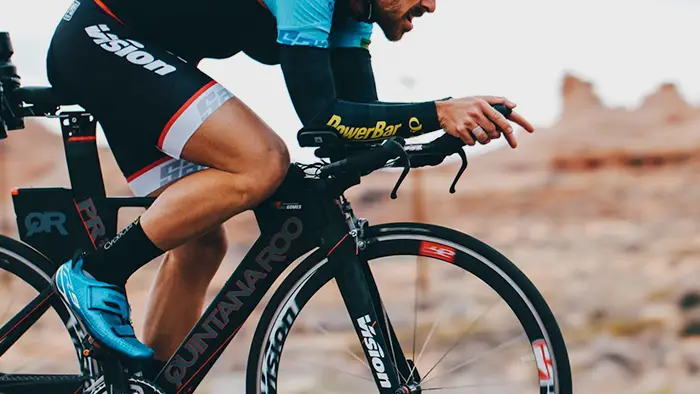If you are a cyclist you probably know that cyclist power is the ultimate Holy Grail. The more power that can be generated the greater speed that can be generated and the greater the distances that can be traveled. As such, there is nothing more critical to improving speed and performance than increasing bike power.
- What is the Average Power of a Cyclist
- What is Watts in Cycling
- Understanding Power to Weight Ratios
- How is Cyclist Power Calculated
- What Power Do Pro Cyclists Produce
- Cycling Power Output by Age
- How to Increase Cycling Power
- Practical Tips for Improving Your Power-to-Weight Ratio
- What is the Average Wattage Spinning
What is the Average Power of a Cyclist
The power that can be produced by a cyclist will usually vary depending on the weight, age, experience, and terrain among different other factors. Overall, the fitter riders or competitive cyclists will usually produce more power as compared to beginners or amateur cyclists.
Overall the beginner cyclist will attain average power output of between 75-100 watts over an hour, while a fit amateur cyclist can hit at least 100 watts of power. Professional cyclists such as those at the Tour de France have been known to get as high as 400 watts of power.
What is Watts in Cycling
Watts in cycling is the measurement of power and represents the energy output over time. When cycling it refers to how much energy a cyclist produces to propel the bike forward. At any given point in time, it is the snapshot of the work being put into the bike during a ride.
Measuring power makes it possible to characterize the practice course, monitor training, assist in pacing, and assess the aerodynamic drag and sleekness of the ride.
Understanding Power to Weight Ratios

Power to weight ratio refers to how much power a cyclist can generate in line with their body weight. In layman’s terms, the PWR measures how much power a cyclist can produce compared to their body weight.
This measure is usually expressed as Weight per kg which is the power that can be produced per every kilo of rider weight.
Overall smaller cyclists tend to be less powerful as compared to heavier riders even though larger riders require more power to propel themselves and their bikes forward, particularly on steep inclines.
When trying to determine a cyclist’s advantage over another over a given terrain the power-to-weight ratio can be particularly critical in predicting the edge one rider has over another. The PWR can also be used to show riders with similar performance levels.
How is Cyclist Power Calculated
Generally speaking, power is calculated by multiplying force by the velocity at which the rider is cycling. In the instance of cycling power (wattage) is equal to gear (force) multiplied by velocity (revolutions per minute).
Cyclist Power = Force ✕ Velocity
According to this equation, power is not a reflection of either the RPM or gear by itself. An increase in both force and velocity will usually result in a higher intensity as compared to an increase in just one of these aspects.
What Power Do Pro Cyclists Produce
During a relatively flat section of the Tour de France or the Olympics, professionals produce between 230-250 watts of power over an hour. However, professional cyclists can top 300 watts over an hour of riding on the more taxing sections of the tour.
Taking into account the number of pro cyclists such as Tadej Pogacar, the average professional cyclist can top a Functional Threshold Power of greater than 400 watts. However, elite athletes such as Chris Froome have been known to ride at power greater than 500 watts.
On flat terrain and in the penultimate sprint stages of the Tour de France, sprinters have been known to top 1500 watts over the last few hundred meters before crossing the finishing line.
Cycling Power Output by Age
Just like with cycling speed, the average cycling power output is significantly impacted by age. The reason for this is that as a cyclist ages, their cycling performance will decrease thus reducing how much power they can produce to propel their bike forward.
It is for this reason that the average age of a professional cyclist is 27.7 years.
Functional Threshold Power By Age
| Age | Functional Threshold Power |
| 18 – 20 | 120w |
| 20 – 25 | 150w |
| 25 – 30 | 180w |
| 30 – 35 | 200w |
| 35 – 40 | 180w |
| 40 – 45 | 160w |
| 45 – 50 | 120w |
| 50 – 55 | 100w |
| 55 – 60 | 90w |
How to Increase Cycling Power
Since cycling power is one of the most fundamental components for increased performance, it is important for every cyclist to work hard to improve how much power they can produce.
The following are some things to do to improve your power:
- Ride in Bigger Gears
Riding in Bigger gears while keeping the same cadence as before results in higher power output over time. You can usually apply this by riding longer in a higher gear than you would normally which over time will develop your endurance thus increasing how much power you can generate.
- Ride Uphill to Develop Muscular Endurance
One of the best ways of improving muscular endurance is to ride uphill at a moderate cadence at a relatively large gear for an extended period.
You can also achieve the same results by doing high-intensity Interval sprints over progressively steeper hills for the same effect.
The reason for this is that cyclists will have to push harder on the pedals while riding uphill which will boost power output over time.
- Ride Into Headwinds
If you happen to live in flat areas, you can still develop cyclist power by riding into headwinds. You can take advantage of windy days by riding rectangular circuits for several miles so that you can have consistent periods of crosswinds, tailwinds, and headwinds.
You can increase the effectiveness of this by pedaling in a moderately large gear into headwinds and using the crosswinds and tailwind riding periods to recover.
- Boost Cycling Power Using Block Training
This is all about doing very hard workouts for two to three consecutive days followed by days of easy workouts or days off.
Given that it places severe stress on the cardiovascular and musculoskeletal systems, block training is one of the most effective ways of boosting cycling power and facilitating physiological adaptation.
This can be very effective as long as one ensures they have enough time to recover following the training block.
- Follow the 75% Rule of Cycling
According to the 75% Rule, one should train for at least 75% of their mileage or time at below 75% of their maximum heart rate.
This means that the cyclist should be doing at least three-quarters of their weekly training at between 50-70 percent of maximum heart rate and 65-85 percent of lactate threshold and no more than 75% of functional threshold power. As such, most of your exercise should consist of easy endurance-building and recovery rides.
6. Weight Training
One very effective strategy particularly for experienced riders is to engage in regular weight training.
According to studies, performing heavy resistance training for the important muscles used in cycling such as calves, quadriceps, buttocks, and hamstrings not only boosts the efficiency of muscles,
but it can also help prevent the loss of power in the muscles while people are engaging in high-volume training or when they are losing weight.
7. Nutrition
Regardless of riding ability, it is critical that you consume a healthy diet with a minimum of processed, fatty and sugary foods to improve power to weight rations. Everything held constant, higher intakes of sugary foods and sugar, in particular, have been shown to be highly correlated with higher levels of body fat.
Unlike muscle tissue, excess body fat reduces power-to-weight ratios and does not do much to improve power output, In the same vein, you should consume a healthy amount of protein, especially after training.
Protein is critical for repair and recovery after training and according to studies, higher intakes of protein can help reduce muscle loss following high-volume training sessions.
Practical Tips for Improving Your Power-to-Weight Ratio
We have seen that reducing body weight, increasing power or a combination of these two can be effective in improving power-to-weight ratios. Nonetheless, this is highly dependent on your background as a cyclist.
Relative Novices/Beginners
Simply riding more miles will improve power-to-weight ratios. Riding more miles will not only improve aerobic fitness but it will also help you lose body fat
For instance if you lose 4kgs and drop from 86 to 82 kg while improving your power output from 210 to 235 watts, your power-to-weight ratio will go from 2.4 watts per kg to a very respectable 2.9 watts per kg.
More Experienced and Fitter Riders
You will have to have more focus than just more miles. While more miles could help you lose weight too much volume might result in burnout and fatigue.
Moreover trying to reduce body weight while having very low fat levels could result in a loss of both fat and muscle mass.
Since power is produced within the muscles, you could find that you have reduced body weight but also lose some power. This will not be good for your power-to-weight ratios. In fact, since absolute power is very critical you might just find yourself worse off.
A better option is to add in some specific training to increase maximal power output. This may include interval training, some threshold rides, and hill repeats.
Since your sessions can be quite demanding, ensure you have enough recovery time during the week so that the muscles can adapt and become stronger.
What is the Average Wattage Spinning
While there is no one wattage that could apply to every cyclist doing a spin class, the average beginner will attain a power output of about 75 to 100 watts with fitter cyclists topping out at between 250-300 watts at spin class.


